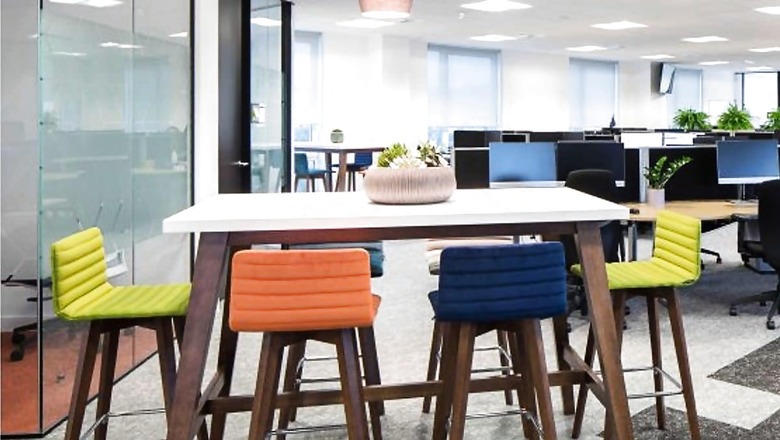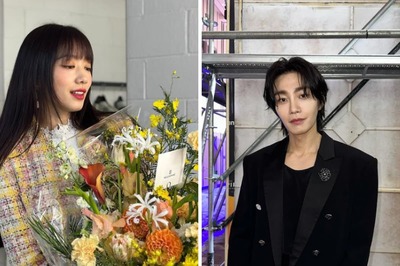
views
June was celebrated as Pride Month to commemorate the 1969 Stonewall Uprising, during which LGBTQ protesters confronted police violence. This month recognizes diverse sexual orientations, advocates for LGBTQ+ issues, and celebrates the pride in embracing one’s unique identity. There is no denying the fact, “Employees are the building blocks of an organization, collaborating with management to achieve company goals. Over time, organizations have prioritized inclusiveness, building teams based on merit and skills. Celebrating occasions like Pride Month is crucial in advancing this commitment to inclusivity.”
As Pride Month highlights the celebration of diversity and inclusivity, it also offers a chance to reflect on the changing landscape of workspace design and simultaneously is an opportune moment to reflect on the transformative power of gender-neutral and inclusive workspace design. As an organization, it is important to understand that Inclusive workspace design goes beyond aesthetics and it profoundly impacts workplace culture. By creating physically inclusive environments, companies signal their commitment to diversity and equality. This can encourage a more inclusive mindset among employees, fostering a culture of acceptance and respect.
The emergence of gender-neutral and inclusive is not merely a trend but it represents a crucial shift towards promoting diversity and establishing environments where everyone, regardless of gender identity or sexual orientation, feels valued and respected and we see it as the future of workspaces where all identities are embraced and it fosters a culture of acceptance.
Embracing Gender-Neutral Design:
Gender-neutral workspace design is crucial for fostering inclusivity. Traditional workspaces often cater to binary gender norms, unintentionally excluding those who do not conform to these norms. By incorporating gender-neutral elements, we can create a more welcoming environment for all employees including facilities such as all-gender restrooms and office layouts that do not reinforce gender stereotypes, ensuring that everyone feels comfortable and included.
Leading the Charge in Commercial Design and Build
The commercial design and build sector is pivotal in this movement. At Flipspaces, we are leading the charge by recognizing the importance of inclusive design trends. Moving away from a one-size-fits-all approach, we create flexible, adaptable spaces that cater to a diverse workforce. This shift is driven by the understanding that inclusivity boosts morale, enhances productivity and fosters creativity.
Key Trends in Inclusive Design
Several trends are emerging in the realm of inclusive workspace design including: –
- Flexible Layouts:Open, adaptable layouts that cater to various working styles and privacy needs are becoming the norm. This flexibility allows employees to choose how they work best, fostering a more inclusive environment.
- Adjustable Furniture:Ergonomic and adjustable furniture that accommodates a range of body types and preferences is essential. Providing employees with furniture that suits their individual needs can enhance comfort and productivity.
- Dedicated Spaces:Incorporating quiet rooms, nursing rooms, and prayer spaces acknowledges the diverse needs of employees. These spaces ensure that all individuals have areas where they can attend to personal or spiritual needs.
- Neutral Palettes and Diverse Artwork:Using neutral color schemes and displaying artwork that reflects a variety of cultures and identities helps create an environment where everyone feels represented and included
Pride Month: A Catalyst for Change
Pride Month serves as a reminder for companies to reflect on their progress and set new goals for inclusivity. Many organizations use Pride Month to launch new initiatives, such as inclusive design projects or diversity training programs. This not only honors the spirit of Pride but also demonstrates a tangible commitment to supporting LGBTQ+ employees, which is a need of the hour.
Business Case for Inclusivity
There is a compelling business case for inclusive workspace design. We have observed that a diverse and inclusive workplaces are more innovative and successful and plays a key role to attract a broader talent pool, reduce turnover, and create a more engaged workforce. In a competitive market, the ability to attract and retain top talent can be a significant advantage.
Conclusion
The rise of gender-neutral and inclusive workspace design is a testament to the evolving nature of the modern workplace. As we celebrate Pride Month, it’s essential to recognize that creating inclusive environments is not just about keeping up with trends but about building a future where everyone can thrive. By embracing inclusive design, companies are not only fostering diversity but also driving success in a world that increasingly values equity and inclusion.
(Inputs by Kunal Sharma, Founder & CEO at Flipspaces)




















Comments
0 comment